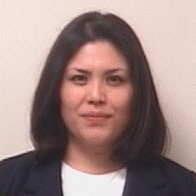Below is a summary of the abstract you submitted. Presenting author(s) is shown in bold.
If any changes need to be made, you can modify the abstract or change the authors.
You can also download a .docx version of this abstract.
If there are any problems, please email Dan at dar78@pitt.edu and he'll take care of them!
This abstract was last modified on March 17, 2023 at 9:51 a.m..

Bacteriophage SoJo was isolated from a soil sample collected at Lake Elkhorn in Columbia, Maryland. Following the direct isolation of the sample, it was plaque purified six times. A crude lysate was produced by plate harvest and examined by Transmission Electron Microscopy (TEM) imaging. Imaging revealed SoJo's siphoviral morphology as determined by its long non-contractile tail and isometric head, both canonical features of siphoviruses. SoJo produced plaques that were approximately 3 mm in diameter and were turbid with round edges after 24 hours of incubation at 30 °C on Streptomyces mirabilis. DNA was isolated from the phage lysate, and DNA digestion analysis was performed. This provided an estimate of 39 kbp for SoJo’s genome length, which is similar to that of phages in the Actinobacteriophage Database BC cluster. Isolated DNA was sequenced by the Pittsburgh Bacteriophage Institute, confirming the previous genome length estimate. The sequencing also revealed a circularly permuted genome with a 71.5% G+C content. Of the five Streptomyces hosts tested to determine host range, SoJo was only successful in infecting its isolation host S. mirabilis. Although benchwork suggested that SoJo is a virulent phage, further genome examination indicated the presence of genes coding the enzymes serine integrase and serine recombinase, characteristics of the temperate replication cycle. Genomic comparison using Phamerator demonstrated that BC cluster phages also carry serine integrase genes, categorizing it as a conserved gene across the clade. This suggests that this cluster of phages may follow a temperate lifestyle with a lysogenic replication cycle. Further analysis using computational algorithms, like DeePhage, may yield more information regarding SoJo’s replication cycle.





